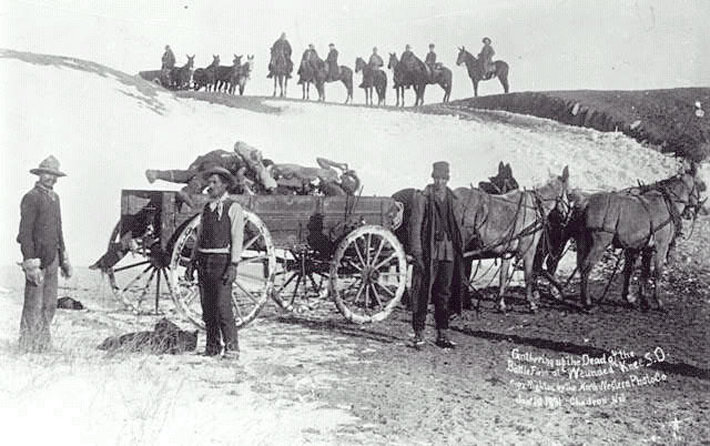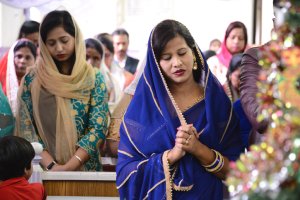This year, Nevada joined California in adopting September 25 as Native American Day. In Wisconsin and South Dakota, the day is celebrated on the second Monday in October. Tennesse observes a similar holiday on the fourth Monday of September.

As John Rhodes wrote in an article titled “An American Tradition: The Religious Persecution of Native Americans,” published in 1991 in the Montana Law Review:
“Although our nation professes to cherish its first amendment-enshrined religious liberty, our society persistently denies this right to America’s original inhabitants. Historically, the religious persecution of American Indians is undisputed. The massacre at Wounded Knee in 1890 provides the most sensational and tragic illustration of this persecution.”
Trisha Burke, a blogger on Native Hope website, describes the anti-religious underpinnings of the massacre:
“This event was precipitated by the United States government’s fear of an uprising due to the practice of the Ghost Dance, a new spiritual practice introduced to the Native Americans by a Paiute shaman called Wovoka.”
“Although our nation professes to cherish its first amendment enshrined religious liberty, our society persistently denies this right to America’s original inhabitants.”
Wovoka believed that the peaceful practice of the Ghost Dance would return Native American ancestors from the dead; buffalo herds would be replenished, the white man would disappear from the land.
On December 15, 1890, believing that Chief Sitting Bull was behind the Ghost Dancing movement, U.S. Indian Service agent James McLaughlin sent Indian police to arrest the chief. A gunfight ensued and Sitting Bull was killed.
“Miniconjou Lakota Chief Sitanka, known as Big Foot, led 350 Miniconjou followers to Pine Ridge to meet with the Ogala Chief Red Cloud in hopes of finding a peaceful resolution,” wrote Burke. “The group was intercepted at Wounded Knee Creek, 20 miles from Pine Ridge Agency, and forced to camp.”
Red Cloud agreed to disarm his people, but while this was happening, a gunshot, that may have been fired by accident, created a chain reaction with those still armed firing at the cavalry, which responded by opening fire with artillery. Four Hotchkiss mountain guns mowed down as many as 300 of his followers.
But suppression of Native religion and culture didn’t begin in the 1890s. Eric Hemenway, of the Little Traverse Bay Bands of Odawa Indians, dates it to President Andrew Jackson and his Indian Removal Act of 1830:
“When the law passed, it gave the United States the green light to formally and legally remove tribal communities under ‘western law.’ Before this, no such sweeping law sanctioned by the federal government existed, with compromise and treaties the only available solutions. Losing Indian lands resulted in a loss of cultural identity, as tribes relied on their homelands as the place of ancestral burial locations and sacred sites where religious ceremonies were performed. Without their lands, nations lost their identities, and their purpose.”
Forty-two years ago, Congress passed the American Indian Religious Freedom Act (IRFA) of 1978, including rights such as access to sacred sites, repatriation of sacred objects held in museums, freedom to worship through ceremonial and traditional rites, and use and possession of objects considered sacred.
“Prior to the IRFA it was illegal for American Indians to practice or discuss their teachings or ceremonies in public without fear of retaliation or incarceration,” wrote Emily Proctor, Tribal Extension Educator at Emmet County, Michigan State University Extension. “Elders would tell stories to their families regarding traditions and ceremonies in a quiet way to appear they are discussing another topic because they wanted to carry on the traditions even though their freedom was at risk.”
On the 40th anniversary of the Act, Smithsonian Magazine interviewed Native American leaders on their thoughts on the impact of the IRFA. Their views reflect its strengths and weaknesses.
“Sadly, due to the displacement of Native people to Indian reservations, many grassroots people do not know where their traditional sacred areas and territory lands are located,” said Kenny Frost, Ute Sundance Chief. “We risk losing the knowledge of traditional places as those people with traditional knowledge leave this world.”
Shirod Younker, Coquille ceremonial woodcarver, put the problem into perspective, saying, “The practices to remove and destroy our culture started more than 150 years ago, in the 1840s and ‘50s. It will take at least that amount of time to come close to restoring what we lost... Our ceremonial ways all come from the earth. We cannot effectively understand their importance or details until we restore the environment that helps sustain us physically and spiritually.”
From its beginnings, the Church of Scientology has recognized that freedom of religion is a fundamental human right. In a world where conflicts are often traceable to intolerance of others’ religious beliefs and practices, the Church has, for more than 50 years, made the preservation of religious liberty an overriding concern.
The Church publishes this blog to help create a better understanding of the freedom of religion and belief and provide news on religious freedom and issues affecting this freedom around the world.
For more information, visit the Scientology website or Scientology Network.


